Has fish farming reached a turning point in sub-Saharan Africa?
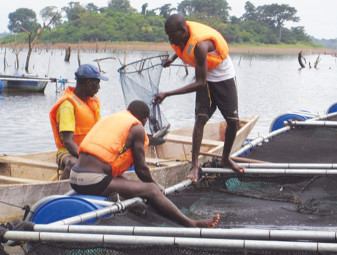
Fish culture in sub-Saharan Africa has been only recently implemented, unlike what has occurred in many other parts of the world. This implementation, which started mainly just after World War II, was the result of a colonial initiative imposed on local populations by colonial administrations with the aim of improving the nutritional status of “candidate” fish farmers. As many as 300,000 ponds were recorded in the early 1960s in the newly independent sub-Saharan colonies. This dynamic had to face a number of constraints of biotechnical, social and economic origin.
Among these constraints were a lack of established fish production practices and the fact that pond fish culture requires a large amount of manpower, both for digging ponds and managing the culture cycle. That could only be achieved through improving the nutrition of the workers.
The increasing and dramatic involvement of funding agencies in the field of agricultural development in sub-Saharan Africa (SSA) during the 1970s and 1980s also addressed aquaculture. The outputs were limited, however, due to a poor development strategy. In the field of aquaculture, research and so-called “pilot projects” were firstly targeted by international cooperation and funding agencies. Such operations did yield advances concerning the biology and culture of tilapia and catfish, as well as fish pond management.
Yet the development projects widely implemented throughout SSA resulted in limited impact and mostly stopped as funding came to an end. The main reason for this was that the projects focused, once again, on a self-subsistence activity for a large number of beneficiaries instead of targeting a selected number of professional, well-trained fish farmers with commercial and profitability targets.
During this period, the Food and Agriculture Organization (FAO) of the United Nations claimed that “Fish culture is everyone’s business.” Following this trend, a number of projects operated by non-governmental organizations were implemented in the 1990s without any greater success.
Currently, African aquaculture development may have reached a turning point, as a series of favorable events start to emerge. These include increasing aquatic product imports by many African countries, development of regional markets for freshwater fish and subsequent high market prices, the example of an established endogenous aquaculture food chain in Nigeria and the increasing number of large-scale private fish farms in several countries.
SEDP
In this context, Societe d’Elevage et de Distribution de Poissons (SEDP), a private fish production and marketing company with its headquarters in Abidjan, Ivory Coast, was started in 2013. Its goal is to grow and market fish and to help establish an aquaculture network in the country based on the development of a value chain involving various stakeholders from input suppliers and fish growers to processors and wholesalers.
The facilities developed by SEDP so far consist of a tilapia hatchery located in Andé-Adzopé (100 km northeast of Abidjan) and two floating cage growout farms on two man-made lakes: Taabo and Kossou — 160 and 250 km north of Abidjan and with 70- and 1,000-km² areas, respectively. The lakes were constructed in the 1970s on the Bandama River for hydropower purposes.
The technology adopted by SEDP for fish farming is so-called “soft technology,” as opposed to a “high-tech” approach requiring high levels of technology. The full growing cycle can be controlled using local materials, local manpower and local inputs available in the country or at least within the region.
Hatchery
The hatchery was set up on a farm of 3 ha total area that was formerly used for producing market-size Nile tilapia. Water is supplied to ponds by gravity from a small dam built across a stream. Ten days after fertilization, fry are collected from broodstock ponds and stocked in hapas placed in other ponds, where the fry are hormonally sex-reversed and grown to a size of 0.5 to 1.0 g. The potential annual capacity of fry production from the Andé-Adzopé hatchery is estimated to be around 10 million individuals.
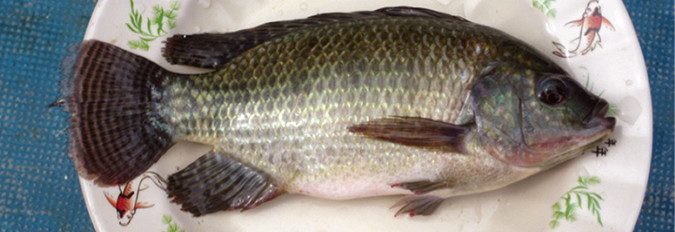
The Nile tilapia (Oreochromis niloticus) used at SEDP are a hybrid strain from several populations found in Ivory Coast: the Bouaké strain and a TilAqua population selected by a Dutch operator using the YY technique for all-male production.
Growout
Fry delivered by the hatchery are grown in 50-m3 floating cages located in Taabo and Kossou Lakes. Following comprehensive research conducted by FAO on fish populations and limnology during the early 1970s, a fisheries management framework was established. It included, among other items, the introduction of Oreochromis niloticus in the lakes to take advantage of a vacant ecological niche and the training of local farmers to raise fish after they were displaced by the dam impoundment that proved unsuccessful.
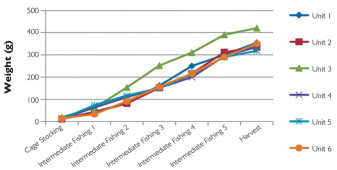
Because of the lack of technical data on water quality in the lakes, SEDP had to develop its own program for monitoring water quality to assess the lakes’ aquaculture potential and optimally manage the existing operations. After the first year of operation, SEDP achieved satisfactory biotechnical performance (Figure 1): individual growth of over 2 g/day, 1.1 feed-conversion ratio and 90 percent survival.
The feed is imported from Ghana in the absence of any feed plant able to provide fish feed in Ivory Coast. The production of market-size fish reached 100 metric tons (MT) in 2014, and SEDP plans to produce 500 to 600 MT in 2015.
Marketing
The commercialization of this production takes place in a favorable context. For Ivorian consumers, and particularly those with the least purchasing power, fish remains the primary source of animal protein due mainly to its relatively low cost compared to that of meat.
Thus, the yearly national fish consumption fluctuates between 250,000 and 300,000 MT, while annual individual consumption is estimated at 13.2 kg. About 67 percent of this demand is supplied by imports, which emphasizes Ivory Coast’s great dependence on outside countries for its fish needs.
The challenge now is for SEDP to act as a driving force for further development of aquaculture within a network that includes small-scale and middle-size fish farmers and various other operators.
Authors
-
Jérôme Lazard, Ph.D.
International Consultant in Tropical Aquaculture
HUDDA (Human Development and Dams)
97 Avenue de la République
75011 Paris, France
[103,114,111,46,97,100,100,117,104,64,100,114,97,122,97,108,46,101,109,111,114,101,106]
-
Habib Coulibaly
Engineer and Executive Director
Societe d’Elevage et de Distributionde Poissons
Abidjan, Côte d’Ivoire
Related Posts
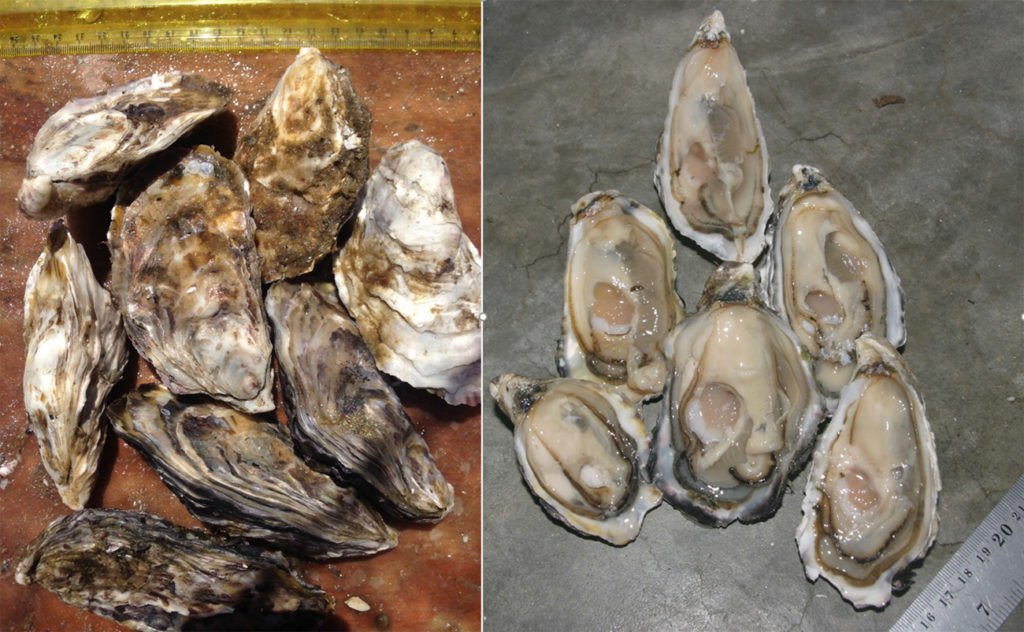
Intelligence
An emerging shellfish farming industry in Namibia
For shellfish farming in Namibia to continue expanding, industry must better comply with approved sanitation standards. The Namibian Shellfish Monitoring and Sanitation Program, currently in development, will help.
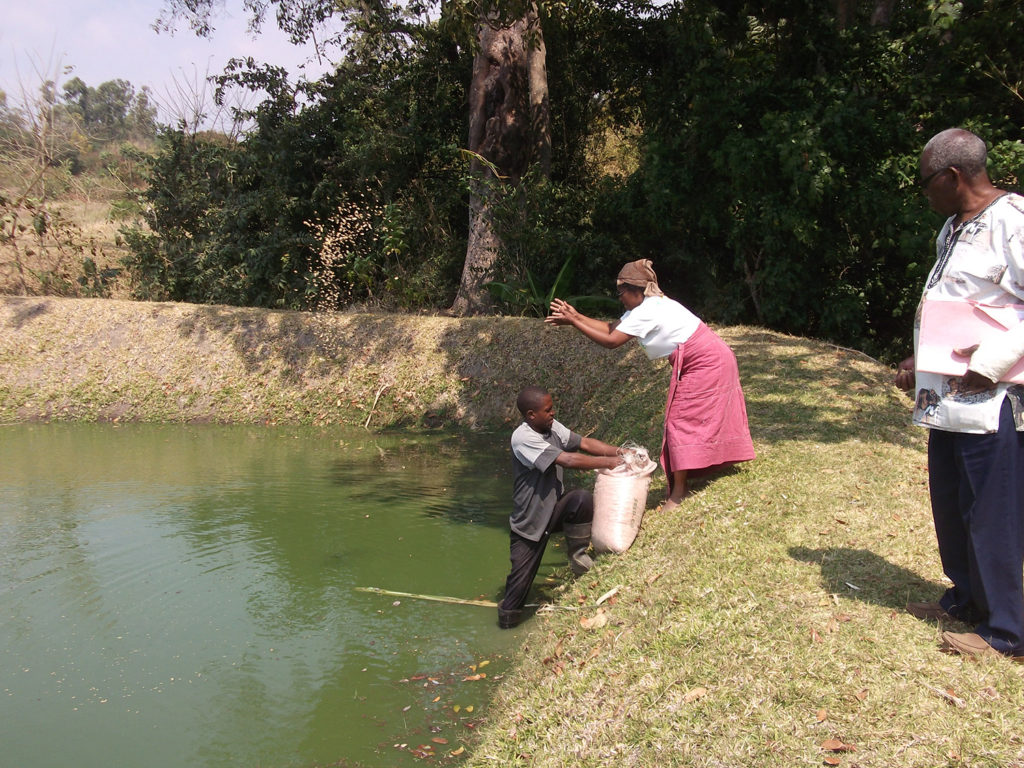
Innovation & Investment
Investing in Africa’s aquaculture future, part 1
What is the future that Africa wants? Views on how to grow aquaculture on the continent vary widely, but no one disputes the notion that food security, food safety, income generation and job creation all stand to benefit.
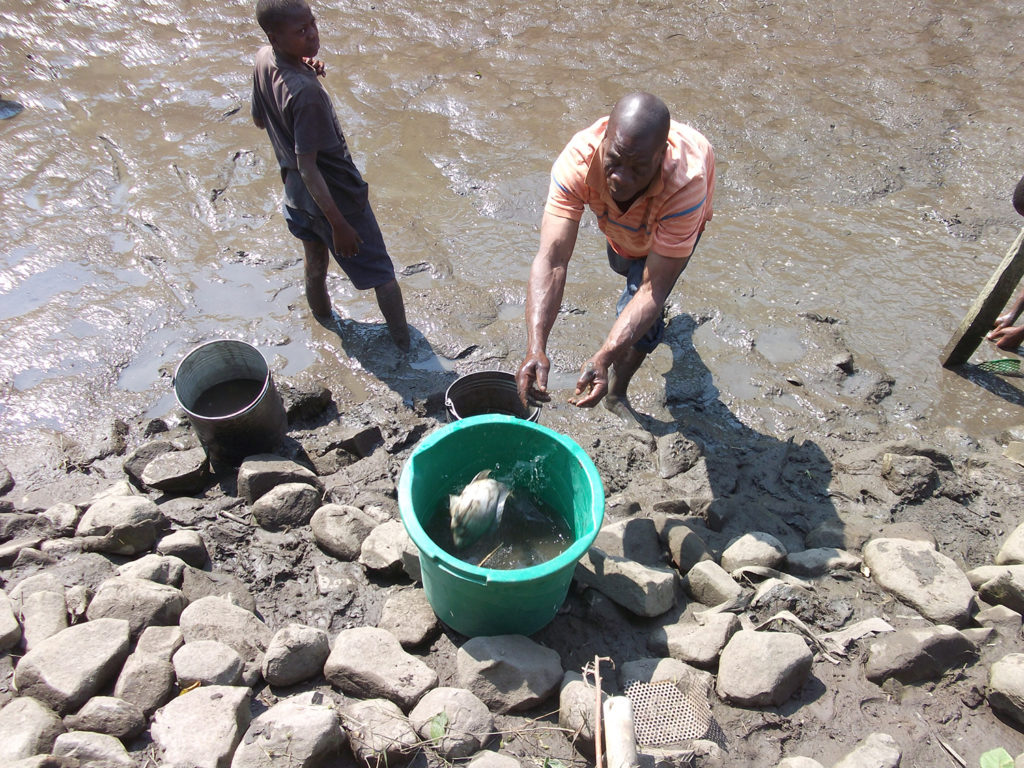
Innovation & Investment
Is Africa a ‘new Asia’ for aquaculture?
Now is the time for investment in efficiency improvements, better genetics, health management and more competition and innovation in the feed sector. Let's not perpetuate the myth that just a little more investment in some technical solutions will solve the problems in Africa.
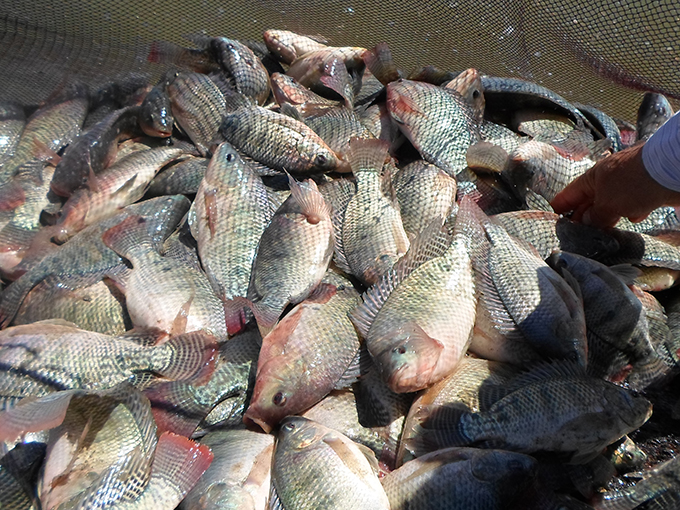
Responsibility
Egypt’s success with tilapia a blueprint for all Africa
Egypt is the third-largest tilapia producer globally, after China and Indonesia, and accounts for about 80 percent of African production of farmed tilapia. Many of the reasons for Egypt’s successful development of its important tilapia industry could be applied to the rest of African continent.


